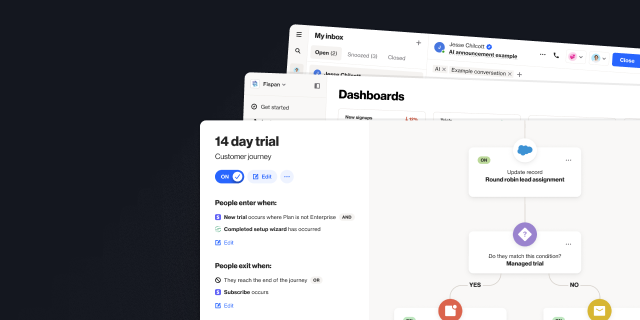Ortto New Product Updates October 2022
Outline
- Introduction
- Leverage your HubSpot CRM data in Ortto
- Add dynamic content to emails using JSON endpoint
- Create Scores for leads, product engagement, and customer health
More like this:

This month we’re excited to release new data sources and features that will help you leverage CRM data from HubSpot in your marketing automation and reporting, add dynamic content fields using JSON endpoint, and (coming soon!) score your leads more accurately than ever before.
Leverage your HubSpot CRM data in Ortto
By integrating HubSpot, you can sync your CRM data including custom objects, companies, products, deals, and more into your CDP. This will allow you to leverage your CRM data to target customers with hyper-personalized automated marketing, and report on metrics.

Our new HubSpot CRM integration will allow you to:
Use custom objects as entry and exit criteria for journeys and playbooks
Report on any custom object in your CRM
Create lead nurture Playbooks and journeys to re-engage no-shows
Personalize email and SMS content with data from your CRM
For more information, visit our help documentation here.
Add dynamic content to emails using JSON endpoint
Our latest dynamic content update allows you to pull content into your emails from a JSON endpoint you control. This means you can add dynamic fields to do things like recommend products or complete information like loyalty points balance.
When adding dynamic content to your emails, you can choose whether data is requested once per campaign or per contact. Campaigns where the content changes regularly are best suited to a ‘Once per campaign’ request type. For example, below you can see how the dynamic fields can be used in a weekly newsletter recapping the latest blogs. On the left, you’ll see the backend of the email, and on the right a preview of what it will look like when it lands in the inbox.

Campaigns where the individual customer’s information should be updated, for example, showing users their last shopping cart, will require the ‘Per contact’ mode.
This new feature allows for greater flexibility around the way you personalize your email content in all campaign types.
For more information, visit our help documentation here.
Create Scores for leads, product engagement, and customer health
Our Scores feature, set to launch early November, will allow you to set up points-based scoring models for customers, products, and leads using any attributes or activities you choose.
You can set up scores to track things like buyer intent, buyer fit, customer health, and product engagement according to a set of weighted Filters and Activities you choose.
Unlike traditional scoring, Ortto's scores using Filters will be fixed, while scores using Activities will degrade according to the half-life you identify. This is especially helpful when building buyer fit scores which rely on demographic and firmographic information that is static and should not degrade over time.

Our changelog documents other fixes and updates across the platform. Check it out here.


“We were looking for a solution that was really easy to use, didn’t require a tech team, and would have a robust integration with Salesforce so we could trigger sales communications in a smarter way. Nobody else out there has what Ortto has.”

Try Ortto today
Build a better journey.

Product
Pricing
Solutions
Features
About
Resources
Ortto for
Templates
Integrations








